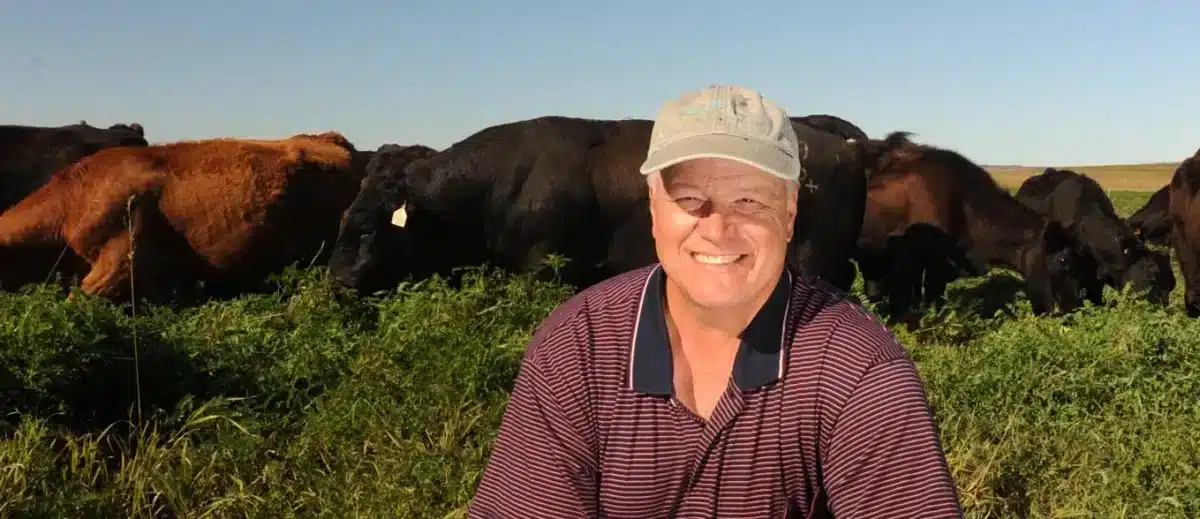“I firmly believe that how we steward the whole ecosystem – the land and the crops and the animals – plays a bigger role than which crops you grow and the prices you get.”
When Gabe Brown first started working alongside his father-in-law on the family farm in North Dakota, he didn’t set out to stand at the forefront of the regenerative agriculture movement. But after a series of weather-related crop disasters, his family found themselves in desperate financial straits and they started making bold changes on their farm. In an effort to stay afloat and keep the farm viable, Brown began experimenting with new practices and found himself on an amazing journey into regenerative agriculture.
How did Brown transform a degraded farm ecosystem into one full of life?
Brown started with the soil and working his way up – one plant and one animal at a time. Here’s what he did:
- Dropped the use of most of the herbicides, insecticides and synthetic fertilisers
- Switched to no-till planting
- Started planting diverse cover crops mixes or “cover crop cocktails” – one of his best-known strategies for improving soil health and nourishing soil biology
- Changed his grazing practices.
Over two decades of experimentation and refinement, Brown developed the “Brown’s Ranch model”, which focuses on regenerating resources by continuously enhancing the living biology in the soil.
Fast Facts: Brown’s Ranch5,000 acresProduces a wide variety of cash crops and cover crops Livestock includes grass-finished beef and lamb, pastured laying hens, broilers and pastured porkGrown several centimetres of new topsoil in only 20 years. |
Interview with the author
The December 2018 issue of Acres U.S.A. magazine features an interview on the North Dakota farmer and rancher.
Brown states a problem with modern agriculture: “Right now, most producers are in the conventional mindset where all they’re doing is treating symptoms. We’re not solving a problem. Producers believe they can buy something in a jug that will take care of anything. It’s like one of these hamster wheels; they just run in circles.”
He says that the key to getting off this treadmill is just to start: “Moving along the regenerative path is like climbing a staircase. You start going, and you try one thing and then another and another. That’s the way it is for my family and me – the more we learn, the more we try. Every year we try to fail at something because if you’re not failing, you’re not learning. That makes farming more enjoyable.”
In the interview, Brown mentions the five principles of a healthy soil ecosystem:
- Do the least amount of chemical or mechanical disturbance possible
- Maintain the soil armour – the residue on the soil
- Enhance diversity of plants and animals (including insects)
- Grow living roots in-ground as long as possible throughout the year
- Integrate animals into the system.
Read the bookIn “Dirt to Soil”, Gabe Brown tells the story of his incredible journey. He offers a wealth of innovative solutions to our most pressing and complex contemporary agricultural challenge – restoring the soil. |
At Zylem, we are helping farmers get off the “hamster wheel” by focusing on soil health. Get in touch with the Zylem team to find out more. Contact us on 033 347 2893 or send your enquiry to [email protected].

About the Author: Alex Platt
Alex is Business Development Manager at Zylem. He’s inspired by the potential of regenerative farming and takes a special interest in the technology and products that are moving agriculture in a more sustainable direction.

